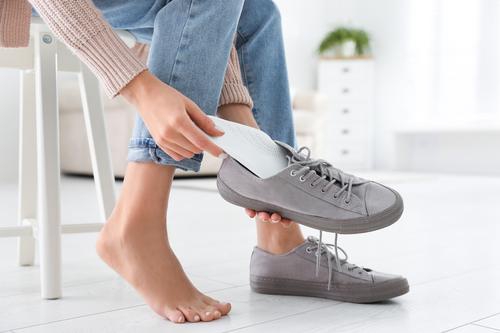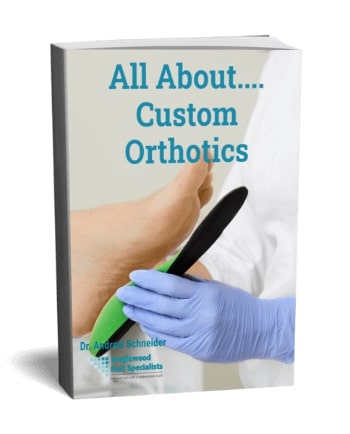It’s the age-old question. Which is better to have: a flat foot or a high-arched foot? The answer you’ll get depends on your perspective. Flat-footed patients dream of high-arches, and the opposite is often true as well. Both can cause foot problems and pain. But, together, we can manage and prevent these complications.
Finding Your Foot Type
Not sure what type of arch you have? Check out our easy guide here. But know this. When it comes to foot shape, there are two main categories: flat feet and high-arched feet. Both have their advantages and problems. But neither is inherently better than the other. However, each foot type can be managed and controlled to prevent other problems.
Flat Feet: Benefits and Disadvantages
Flat feet, known as pes planus, is a condition where the arch collapses, causing the entire sole of the foot to come in contact with the ground. This can be caused by genetics, injury or overuse. One of the benefits of a flat foot is that it better absorbs shock than a foot with a high arch. This can be beneficial for people who engage in high-impact activities such as running or jumping.
However, flat feet can cause problems like foot, ankle and knee pain. Overpronation, when your foot rolls too far inward with movement, can also be a problem, leading to injuries such as plantar fasciitis, heel spurs and shin splints. Additionally, flat feet can make it hard to find shoes that fit comfortably. To help with this, you may wish to choose shoes that offer support, stability or motion control to help counter the risks of this foot type.
The Good and Bad Side of High-Arched Feet ![man with flat feet]()
High-arched feet, also known as pes cavis, is a condition where the arch of the foot is higher than normal due to genetics, nerve damage or certain medical conditions. One of the benefits of high-arched feet is that they provide a more stable, even rigid foot. This makes them ideal for activities like dancing or gymnastics that require strong foot control.
However, high arch feet can also lead to a number of problems. These include foot, ankle and knee pain. Supination, when your foot rolls too far outward with movement, is also a concern. This can lead to injuries such as stress fractures, ankle sprains and Achilles tendonitis. Additionally, high arch feet can also make it hard to find shoes that fit properly and comfortably. To help compensate for this concern, you may also wish to choose shoes that have more cushioning to compensate for the rigidity of your foot.
Making the Most of Your Foot Type
As you can see, neither foot type is superior to the other. Each has its own benefits and problems. The best way to manage and control the issues that arise with each foot type is to get fitted for custom orthotics. These are special inserts that we place in your shoes to provide support and cushioning to your feet. They can help reduce pain, improve posture and reduce injuries.
If you have flat feet, you may be able to relieve some of your foot pain with a technique called short foot exercises. (They involve pulling the head of your big toe back toward your heel, while keeping your toes in a neutral position and without stretching too far or bending.) According to this study, this exercise can strengthen your foot's intrinsic muscles, reducing flat foot side effects such as pain, gait changes and limits on mobility.
orthotics can provide you with stability while reducing your associated pain and discomfort. These specialized inserts are designed to fit the contours of your feet and provide increased support and stability. They can help to redistribute the weight of the body and reduce the stress on the feet, ankles and knees.
Additionally, orthotics can improve the alignment of the foot and ankle, reducing the risk of overpronation and promoting a more natural gait. In turn, they can also improve balance and efficiency, making it easier to perform activities that require a lot of standing or walking.
Custom orthotics can also be an effective way to address problems associated with high arched feet, while reducing pain and discomfort. Unlike orthotics for flat feet, they cannot reduce the supination risk associated with this foot shape. And they also won’t increase your foot flexibility. But they can help redistribute the weight of the body and reduce the stress on the feet, ankle and knees. They can also improve the alignment of your foot and ankle, promoting a more natural gait. Finally, your orthotics can reduce the risk of stress fractures, ankle sprains and Achilles tendonitis, all of which are common problems associated with a high-arched foot.
Additional Means of Support for Flat Feet or High Arches
In addition to changing your shoes and adding custom orthotics, you may offset the disadvantages of your foot type by training your intrinsic foot muscles. This can help with added stability, and it can also help counter overpronation or supination.
Also, once you find a shoe that works well for your foot—and feels comfortable the very first time you wear it—stick with that model. Make sure you’re getting a good fit. (Check out our sneaker fit guide here, for tips and guidance.) And, when in doubt, feel free to check in with our podiatrist in Houston for help with flat feet or high arches.
Treating Every Foot Shape in Houston, TX
Here’s the story—you only have the feet you were born with. (Or the ones whose shape has shifted over time.) For that reason, there’s no point in wishing your arches were higher or lower.
However, there’s also no point in living with foot pain or instability caused by your arch height. Instead, make an appointment with Dr. Andrew Schneider. When you come into the office, we’ll check out your foot and provide a gait analysis. Then, we can craft a pair of custom orthotics that provides support exactly where you need it. That way, we can guarantee that you’ll walk or run in comfort, regardless of the height of your arch. And, in the end, that means every foot shape is the “better” one!




















